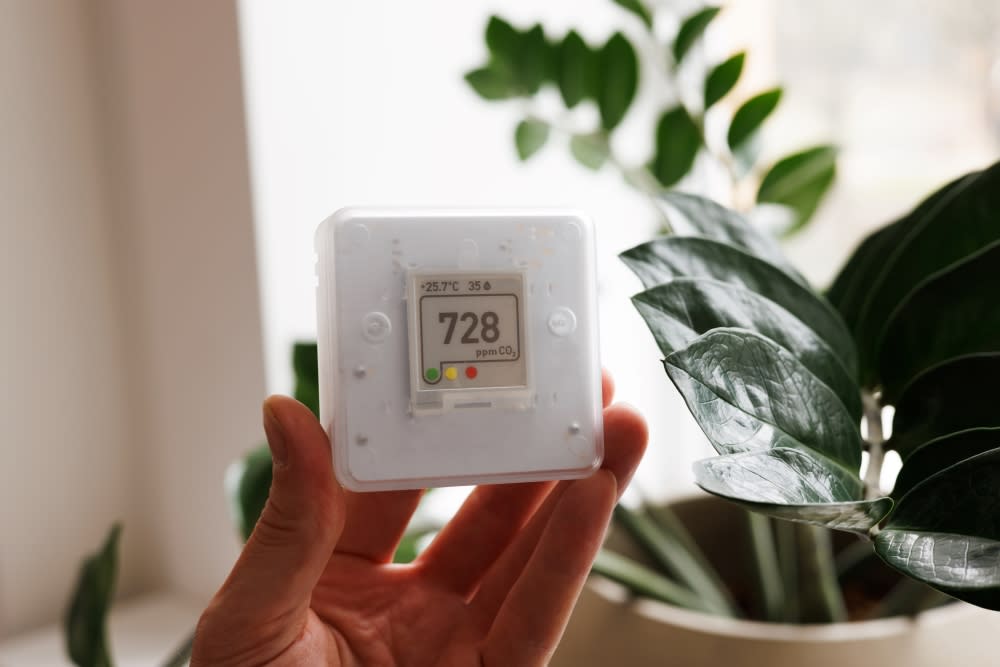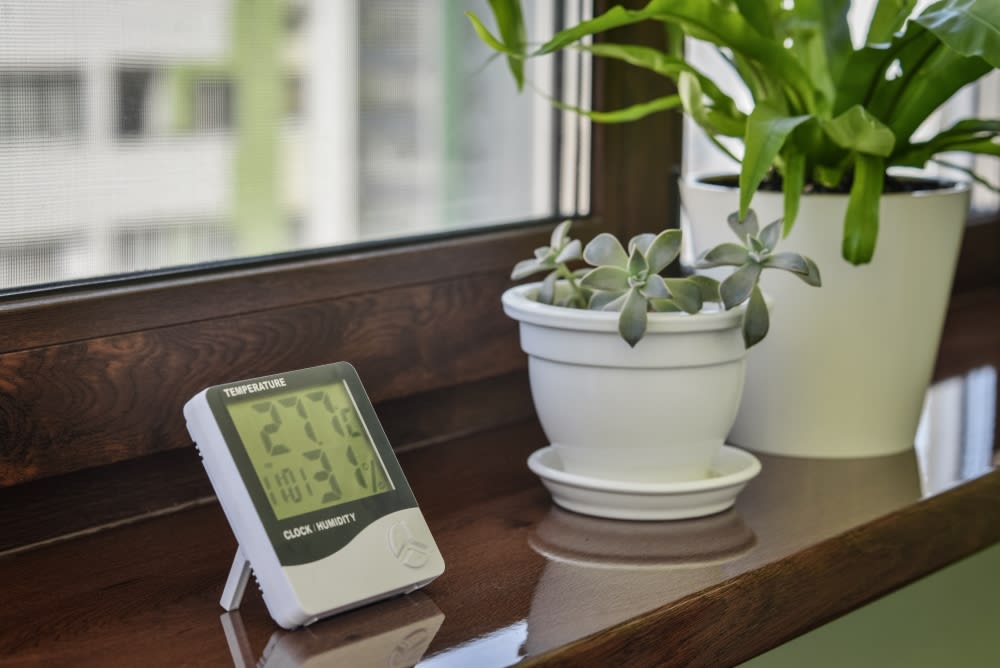- Published 22 Feb 2024
- Last Modified 6 Mar 2024
- 7 min
Breathing Easy: The Essential Guide to Air Quality and Humidity Monitoring in Homes
Discover the key to healthier living with our guide on air quality monitors & humidity monitoring. Explore RS Australia's range for a breath of fresh air.

As the vast landscapes of Australia grapple with formidable environmental challenges like bushfire smoke and rising urban pollution, the significance of air quality in our homes has reached unprecedented levels.
According to a report by the Australian government's Australian Institute of Criminology, fire departments attend to around 45,000 to 60,000 bushfires annually.
Adding to this, the Department of Climate Change, Energy, the Environment and Water's Australia State Of The Environment 2021 report reveals the alarming levels of pollution produced by our urban areas, exacerbated by high rates of waste disposal.
In this evolving landscape, where the air we breathe is under constant pressure, this article acts as a comprehensive resource for Australian homeowners to navigate the complexities of air quality, shed light on the causes of air pollution in homes and introduce air quality monitors as some of the best tools for cultivating a healthy home environment.

Understanding Indoor Air Quality
Indoor air quality encompasses the condition of the air within our living spaces and its impact on the health and well-being of occupants.
Now, let's briefly delve into the key pollutants commonly found in Australian homes and their health implications:
- PM2.5 and PM10 (Particulate Matter): Fine particles suspended in the air, often originating from combustion sources like vehicle emissions and cooking appliances. When inhaled, these particles can penetrate deep into the respiratory system, causing respiratory and cardiovascular issues.
- Nitrogen Dioxide: Primarily emitted from combustion processes in vehicles and gas appliances. Prolonged exposure can irritate the respiratory system, leading to respiratory infections and worsening pre-existing conditions such as asthma.
- Carbon Monoxide: A colourless, odourless gas produced by incomplete combustion of fuels. High levels of CO can lead to poisoning, causing symptoms such as headaches, dizziness, nausea, and, in severe cases, death.
- Tobacco Smoke: Contains numerous harmful chemicals, contributing to respiratory problems, cardiovascular diseases, and an increased risk of lung cancer, particularly for passive smokers.
- Wood-Burning Heaters and Unflued Gas Heaters: Can release pollutants like particulate matter, carbon monoxide, and nitrogen dioxide. Prolonged exposure may result in respiratory issues and aggravate existing conditions.
- Mould: Indoor mould growth can lead to respiratory problems, allergies, and skin irritations. Individuals with asthma or compromised immune systems are particularly vulnerable.
- Bushfire Smoke: During bushfires, the air can be filled with fine particles and gases. Inhalation of bushfire smoke can cause respiratory distress, eye irritation, and exacerbate pre-existing health conditions.
A hygrometer plays a pivotal role in maintaining a healthy indoor environment by measuring humidity levels, a critical factor in assessing and enhancing indoor air quality.
Deep Dive into Air Quality Monitors & Hygrometers
Air quality monitors and hygrometers are sophisticated devices designed to assess the composition of indoor air and provide valuable insights into its overall health.
Air quality monitors, also known as air quality testers, are equipped with optical, electrochemical, or metal oxide sensors to detect and quantify various pollutants present in the air at your home. These may include particulate matter (PM2.5 and PM10), nitrogen dioxide (NO2), carbon monoxide (CO), and other harmful substances. The monitors analyse the concentration of these pollutants in real-time, providing accurate and up-to-date information on air quality.
Hygrometers, specifically designed to measure humidity levels, employ different technologies such as capacitive, resistive, or thermal conductivity sensors. These sensors respond to changes in humidity by altering their electrical properties, providing an accurate reading of the moisture content in the air.
Homeowners can leverage this information to figure out how to improve their indoor air quality and ensure optimal humidity, contributing to a safer and more comfortable home.
Benefits of Using Air Quality Monitors & Hygrometers in Homes
Deploying air quality monitors in homes yields multifaceted advantages for residents in Australia. Firstly, these monitors ensure health benefits by providing real-time data on pollutant levels, enabling occupants to take preventive measures against respiratory issues and allergies.
Early detection of harmful pollutants such as PM2.5, NO2, and CO ensures timely intervention and promotes a healthier indoor environment.
Moreover, air quality monitors contribute to enhanced comfort by allowing homeowners to tailor their living spaces for optimal well-being.
The integration of hygrometers in these monitors adds another layer of benefits, facilitating the maintenance of optimal humidity levels.
Selecting the Right Air Quality Monitor & Hygrometer for Your Home
Selecting the most suitable air quality monitor and hygrometer for your home involves careful consideration of several factors tailored to the unique environmental conditions in Australia.
Firstly, assess the types of pollutants prevalent in your area, with a focus on PM2.5, PM10, NO2, CO, and other specific pollutants of concern. Ensure that the chosen device is equipped to detect and measure these pollutants accurately.
Additionally, consider the size of your home, as larger spaces may require monitors with broader coverage. Look for devices with features like multiple sensors or the capability to connect with additional units to ensure comprehensive monitoring in larger living areas.
Given the diverse climatic conditions in Australia, opt for monitors designed to withstand temperature and humidity variations. Compatibility with Australian environmental conditions ensures reliable performance.
Lastly, explore user-friendly models that provide clear data interpretation, ensuring that homeowners can easily understand and act upon the information provided by the monitor and hygrometer.
Using Your Air Quality Monitor & Hygrometer Effectively
Optimal placement, operation, and interpretation of data from air quality monitors and hygrometers are crucial for effective indoor air quality management.
Begin by placing the air quality monitor in a central location within your home, ensuring it is away from direct airflow or obstructions that might affect readings.
For accurate humidity measurements, position the hygrometer in an area representative of your home's overall conditions, avoiding spots with extreme temperature variations.
Operate the devices according to the manufacturer's guidelines, ensuring regular calibration for accurate readings. Interpret the data by understanding the normal ranges for pollutants and humidity levels, which may vary based on factors like outdoor air quality and seasonal changes.
To monitor and manage humidity levels effectively, use the hygrometer feature to identify optimal indoor humidity, typically between 30-50%. Adjust your home's ventilation and temperature settings to maintain these levels, preventing the growth of mould and ensuring comfort.
Integrate these monitors into daily life by setting up alerts for high pollutant levels or suboptimal humidity, allowing for timely adjustments.
Maintaining Your Air Quality Monitor & Hygrometer
Regular maintenance, calibration, and updates are essential to ensure the long-term accuracy and effectiveness of your air quality monitors and hygrometers. Follow these guidelines for optimal performance:
- Regular Cleaning: Dust and particles can accumulate on sensors over time, affecting accuracy. Gently clean the sensors and vents using a soft brush or compressed air to maintain clear pathways for air and accurate readings.
- Calibration Checks: Perform periodic calibration checks as recommended by the manufacturer. Calibration ensures that the sensors are aligned with accurate measurement standards. Follow the specific calibration procedures outlined in the user manual.
- Software Updates: Check for and install any available software updates or firmware upgrades provided by the manufacturer. Updates may include improvements to algorithms, bug fixes, or additional features, contributing to enhanced performance.
Ensure A Breath of Fresh Air for Your Home

Prioritising air quality and humidity monitoring in your home is a fundamental step toward ensuring the health and well-being of your household. The challenges of air pollution, exacerbated by factors like bushfires and urban pollution, underscore the necessity of proactive monitoring. Investing in reliable air quality monitors and hygrometers not only provides early detection of harmful pollutants but also contributes to enhanced comfort and a healthier living environment.
As you embark on this journey towards cleaner air, we encourage you to explore the diverse range of air quality monitors and hygrometers available at RS. Transform your living spaces into havens of well-being with cutting-edge solutions that empower you to breathe easily.
Popular Air Quality Monitor & Hygrometer Brands
Renesas Electronics
An established brand name in air quality monitors, analog, power and SoC products, Renesas Electronics offers reliable design innovation to create a limitless future.
Related links
- Air Quality Monitors
- The Importance of Air Quality Monitors in Enhancing Passenger...
- Seeed Studio Grove-Temperature Pressure and Gas Sensor (BME680)...
- Advancing Miner Safety with Air Quality Monitors
- Tips on How to Improve Your Home’s Indoor Air Quality
- Seeed Studio Grove-VOC and eCO2 Gas Sensor (SGP30) Gas Sensor for...
- Seeed Studio Air Quality Sensor v1.3 Grove System, Indoor Air...
- The Role of HVAC Systems in Mining Air Quality & Humidity